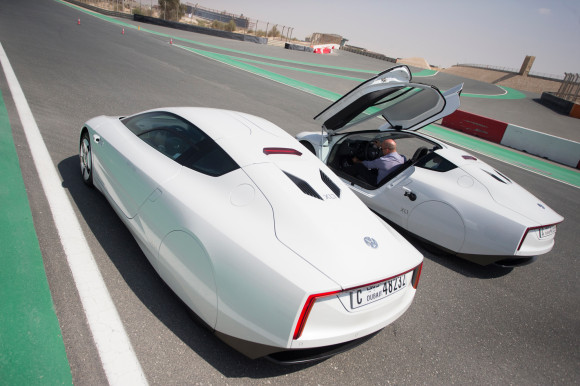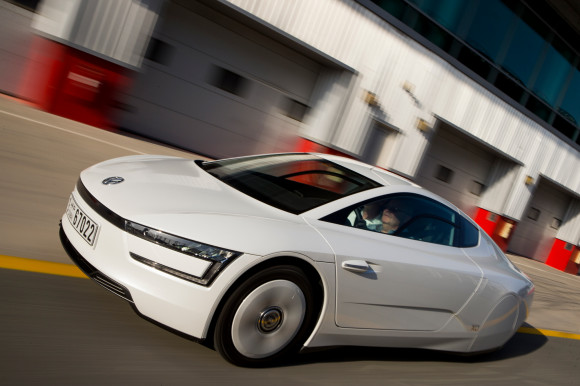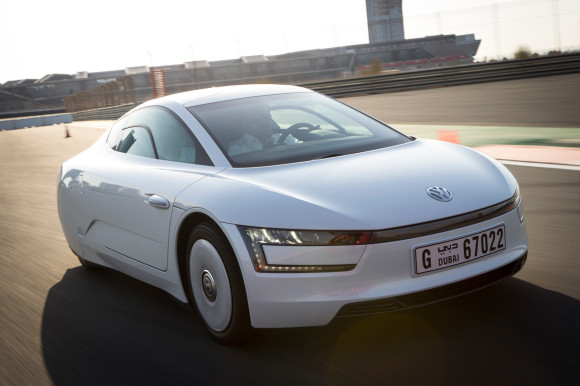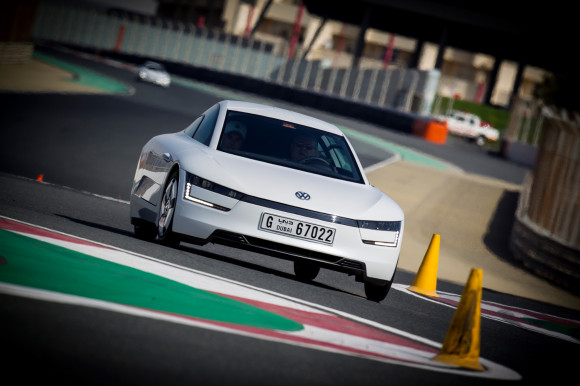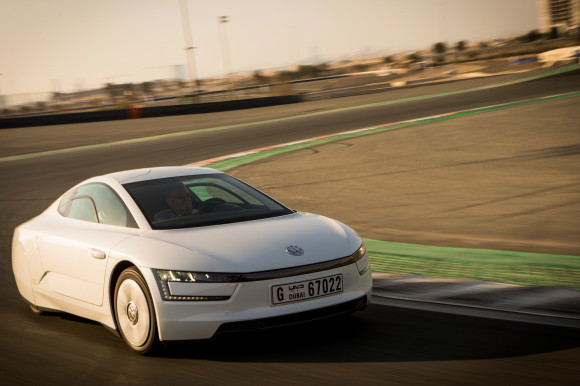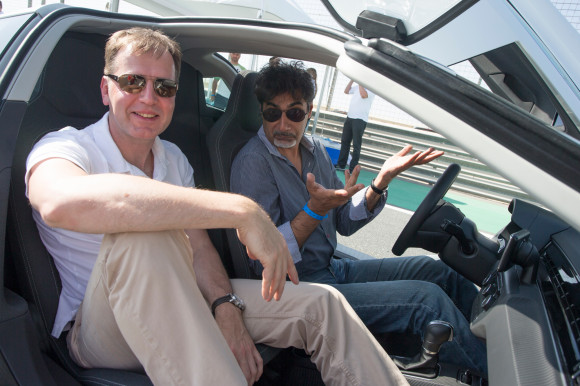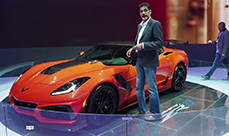We drive a 1-litre car – the Volkswagen XL1
The most expensive economy car ever, points to the future
By Shahzad Sheikh
Whilst at the Dubai Autodrome to drive the magnificent Golf R recently (read that review here), we also had a chance to try out the astonishingly little Volkswagen XL1 electric-hybrid car. This tiny streamlined road-hugging projectile is what’s known as a 1-litre car. No that doesn’t mean it has a 1.0 engine driving it – it actually means that it’s capable of sipping fuel at a rate of 1L/100km.
In fact that’s an outright lie on the part of VW. The XL1 does not accomplish 1L/100km – it actually uses even LESS fuel and manages 0.9L/100km. Gosh!
Does it even have an engine? Yes it does, a 2 cylinder turbo-diesel putting out 48bhp. This combines with a 27bhp, 20kW electric motor. The combined total might only be 75bhp, but this thing is as light as a Caterham R500.
And it drives the rear wheels through a 7-speed Double Clutch Auto, riding on skinny 16-inch Magnesium wheels. That gives it an electric only range of 50km, but 500km overall thanks to the diesel motor with a 10-litre fuel tank.
They haven’t skimped on goodies either – gullwing doors with staggered seating for two (the batteries are in the passenger side footwell), carbon-fibre body, ABS, stability control, adjustable driver’s seat (slides and pivots at the base), adjustable steering column, air conditioning, cruise control, multimedia and sat-nav, parking sensors, 120litres of luggage space and cameras instead of rear-view mirrors (yes just like the Shelby in the Need for Speed movie) with TVs embedded in each door for the display.
This isn’t some test-bed prototype, this is a car that’s been designed, engineered, developed and built ready to be bought and run on today’s roads. Even crash safety is up to VW’s usual standards and if you’re wondering what happens in case of a rollover, crash sensors instruct the bolts for the doors to release and they can be push out so that occupants can escape.
So what’s it like to drive then? We had a few laps around one of the smaller configurations of the circuit and I can tell you it’s quite a surreal experience. You are sitting incredibly low, fortunately not as cosy with your passenger as you might have been had they not located the seats in this manner, visibility out the back is non-existent, and learning to use the TVs instead of mirrors is rather disorientating and hard to get used to at first – no wing mirrors makes for a more slippery shape.
It moves surprisingly quickly, and there’s no shortage of linear acceleration or cruising ability at slightly higher speeds once the quiet diesel engine kicks in. The most obvious difference from a regular car is the steering which is completely non-assisted. So like an old car you need to get it rolling before trying to turn the weighty little helm. But it does make it enjoyable to pilot with good feel and decent accuracy and response.
The brakes are strong too, thanks to a booster and the handling is very poised thanks to the low center of gravity with a decent amount of grip from the low-rolling resistance tyres, although they do tend to squeal early.
Despite the fact that the fit and finish was as good as any current VW – in fact most of the bits are recognisable from the Volkswagen model range – I couldn’t help but be a little tentative with this car, as you would a rare prototype.
However this is neither rare nor a prototype. They are building 250 of these cars, out of which 200 will actually go to customers, and five have already been sold here in the Middle East. So since it’s just another economy-minded VW (with extremely low emissions I might add – just 21g/km CO2!) why wasn’t I throwing the car around to see what it could really do?
Well because I couldn’t easily forget that each car cost around 110,000 Euros! That’s $151,000 and AED556,000. Gulp! It may be saving you money when it comes to refuelling, but you’ll have to go to the moon and back to recover your money in fuel savings!
Which of course most of the 200 won’t do. Instead they’ll end up sitting in collections and museums. The Volkswagen XL1 is a novelty car, a marker when it comes to the future of motoring, an engineering exercise from the people that brought us the mighty Bugatti Veyron, a demonstration of what is possible and what we can expect from our city commuter cars in the future.
The future just got a little more interesting.

